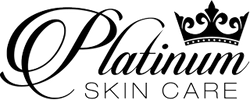Why Peels Are the Number #1 At-Home Beauty Treatment
If You Care About Results. Then You Need to Consider Peels.
Why?
Because they help resurface your skin.
Versus most "products" that just sit on top and don't penetrate deep enough to make lasting changes.
It's the hidden truth of skin care.
Peels can help by minimizing wrinkles, removing cellular buildup, stimulating skin regeneration, reducing fine lines, helping with hyper-pigmentation, clearing up blemishes or acne scarring, and even help get rid of stubborn acne, all while improving your overall texture and tone!
If you have skin issues and want to get help, then peels are a great place to start. The only hard part is knowing how to do them.
Which is why we created this guide.
Learn what to do, where to start, what acid to choose, and more. And if you need further help and support check out this article (which is another deep dive), or join our Facebook Group, which is filled with Peel experts who can help you get started.
Happy peeling!
Check Out Some of Our Most Popular Peels
Chemical Peels 101
Chemical Peels 101
#1 - Anti-aging
I've been in the skin care business a long time and I can tell you that peels are one of your greatest friends if you want to reduce the appearance of wrinkles and fine lines.
It's simple: The acid breaks down the skin on the surface and helps your skin regain the thickness and sturdiness people have in their youth (within reason of course).
Beyond the immediate effects it also helps over the long term too. Peels help stimulate something called fibroblast.
Essentially, the collagen and elasticity are rejuvenated and maintained to help your skin look and feel younger for longer.
But peels don't just stop at wrinkles and fine lines. Another reason they are so popular is that acids can help control acne and treat acne scarring.
#2 - Acne
As someone who has struggled with acne after having children, I can tell you from experience, peels were KEY for me.
It should start to make sense if you read the ingredient labels on acne wash and lotion bottles. Most have ACIDS (same as peels) to help reduce or remove the dead skin build up and keep the pores free of clogs.
Keeping pores clear is the ultimate key to controlling acne, which you can learn more about here.
Peels amplify this aspect by getting rid of the layers of dead skin that are at the root cause of acne. Getting rid of skin clogging dead skin and stopping the cycle as quickly as possible is essential.
Which a peel can help do!
#3 - Scarring
On the scarring side of the equation you have things like the TCA or Jessners peel which can help reduce and remove scars over time.
Slowly but surely removing the layers of dead scar tissue can help your skin to mold back to a smooth appearance.
If you've ever suffered from acne then you know how embarrassing scars can be. Peels can be the tool that finally helps you gain a little more confidence back in your skin.
#4 - Pigmentation
Lastly from a skin tone perspective, peels help remove layers upon layers of damaged skin helping you find and expose the "normal" and healthy skin below.
But's it's not without risks.
There are occasions where the underlying skin can be pigmented and this may come to the surface after a chemical peel. That's the last thing anyone wants to see after doing a chemical peel. In most cases repeated chemical face peels will remove even the deeper layers of damaged skin and can stop that from happening, but it's not perfect.
To alleviate your concerns, I am going to talk more about that below in the section on "who should do a peel".
Which Chemical Peel is Right For Me?
Before we got to this question I wanted to make sure I covered a few things:
- I wanted you to understand that all acids AREN'T right for everyone.
- Peels can be dangerous when used incorrectly
- What conditions peels can be used for
- How peels work
- And that there are many different peel strengths available
At this point it's time to start taking a deeper dive into which peels are the best fit for your situation. Thanks to different acids having similar benefits, many acids can tackle more than one issue and vice versa. That's why we ask you so many questions when we consult over the phone. We want to find which peel is going to work best for your particular combination of problems and tolerance levels. The steps below will help you determine which peels actually make sense for your skin type, condition, and experience. Let's get started!
What Is Your Peel Tolerance
Level 1
Excellent for 1st timers. A level 1 peel will give a light tingle or itchy feeling. Many people with a high tolerance will feel nothing at all!
Level 2
Perfect for those needing more than the mildest acids can provide. A level 2 peel can also give a light tingle/itch but can go up to a light sting.
Level 3
For those receiving professional peels or looking to move up in strength. A level III peel can be quite intense starting with a sting and becoming hot.
Check Out Some of Our Most Popular Peels
How to Prepare For Your Chemical Peel
Since you have taken the time to read this page, learned all about what chemical peel acids you should choose, and the percentages and pH levels available to you, it's time to go peel shopping.
Should you still have any questions, or need additional information about our best chemical peels or choosing a peel that's right for your skin join our facebook group to ask questions and get support!
Chemical Strengths: What You Need to Know
Let's set the record straight: Most of the time peels are used by professionals like dermatologists and estheticians. We aren't going to argue with that.
We run a professional med spa as well so we are very familiar with peels. But that doesn't mean that someone can't use them at home with enough help and guidance.
The key is finding which one is right for your skin and knowing how to apply it correctly. It all comes down to cost and convenience. Once you know how to use them on your own, it becomes easier and more cost effective to do them at home.
What we need to avoid is choosing the wrong peel. Which, beyond this page's information, is why we recommend readers join our Facebook Group to get their questions answered by all the experienced peelers in the Platinum Family!
And in terms of cost: One peel with a profession can cost over $200... or you can get each peel for under $2 an application using our peels.
It can be confusing comparing different acids and their percentages, this is because a low percentage in one acid can actually be a great deal stronger than a higher percentage in another acid.
30% in glycolic acid does not = 30% in trichloroacetic acid.
Glycolic 30% is one of the mildest acids we retail, and 30% TCA is the strongest acid we create.
These are the acid strengths in an approximate order, including acids that are similar in strength or irritation.
- 3% Salicylic
- 50% Lactic | 22% Mandelic Azelaic | 30% Glycolic | 40% Mandelic | 7% TCA
- 50% Glycolic | 15% Salicylic | 13% TCA (1 layer)
- 25% Salicylic
- 70% Glycolic | 13% TCA (3-5 layers) | Jessners (multiple layers)
- 20% TCA (1-2 layers) | Progressive Peel
- 30% TCA
This is what makes it confusing. All these different acids are hard to tell apart and keep in order. That's why we made the chart above, which shows the approximate increase in strength between each peel level. Even though these different types of chemical peel acids are compared, remember that everyone's skin is different and reacts differently. This chart can be used as a tool to help you decide what the best chemical peels for your skin are.
But if you are confused or need more information please don't be afraid to ask of help. Peels are an acid, and can cause severe irritation if done incorrectly. Always make sure you are 100% certain you have the right product and technique before you apply it.
How Many Applications Will It Take?
"One and Done" peel myth. Let's nip this one in the bud before you buy your first peel. The truth is that several applications will be needed over the course of weeks, months (or even years) to address skin damage.
Using a chemical peel to get rid of acne, treat acne scars or achieve ageless skin requires repeated use. I wish it were different and that you could only do it once to get results. But like anything in life, it takes effort and consistency to get results. There are no magic results!
A "Treatment Series" is 6-8 peel treatments performed at a 1-2 week interval. 6-8 treatments are recommended to get the best results. Many times more than one treatment series is needed to remove deeper skin problems.
After your peel series you can enter into a maintenance mode.
Many people move to a monthly or quarterly peel regimen to keep their face looking young over time.
That's why we are so passionate about having the best at home peels at affordable prices. In order to use them to their full advantage you'll need to perform them on a somewhat regular basis, and doing them at home gives you access to that ability!
How Do Platinums Peel Stack Up?
Platinum Skin Care creates ONLY Certified Chemical Peels and at home peels. Each peel you purchase will come with documentation papers and package markings to match. Each safety sealed and guaranteed to be:
- the exact percentage listed.
- the exact pH level listed.
- with a full direction book, links to videos and a number to call with any questions.
How many peels will I get out of a bottle? Here's how we figure how many chemical peels you will get from each bottle. There are 456 drops per each 1oz. of solution, Therefore ...
- 5ml. = 76 drops (20 drops per peel) or 3+ peels per bottle!
- 30ml. (1oz) = 456 drops (20 drops per peel) or 20 peels per box!
- 60ml. (2oz) = 912 drops (20 drops per peel) or 40 peels per bottle!
*It is important to understand that a single treatment, be it laser, microdermabrasion or a chemical peel, is not enough to keep skin clear and younger looking. As any reputable skin care expert will tell you, a daily program is the key to consistent, clearer, younger looking skin.
Our TCA is a Reagent Grade (ACS). This is the highest purity level that can be attained. It meets the standards of ACS Reagent Chemicals, Current Edition. Reagent grade chemicals are high quality and purity for laboratory use. The American Chemical Society Committee on Analytical Reagents establishes the standards for reagent chemicals. All of our chemical peels are created inside of an FDA registered laboratory. Again, this is about quality and safety for our clients.



